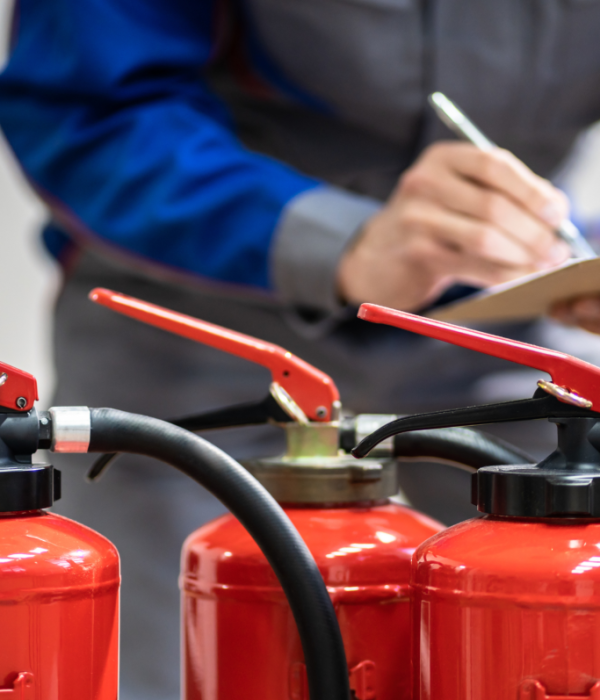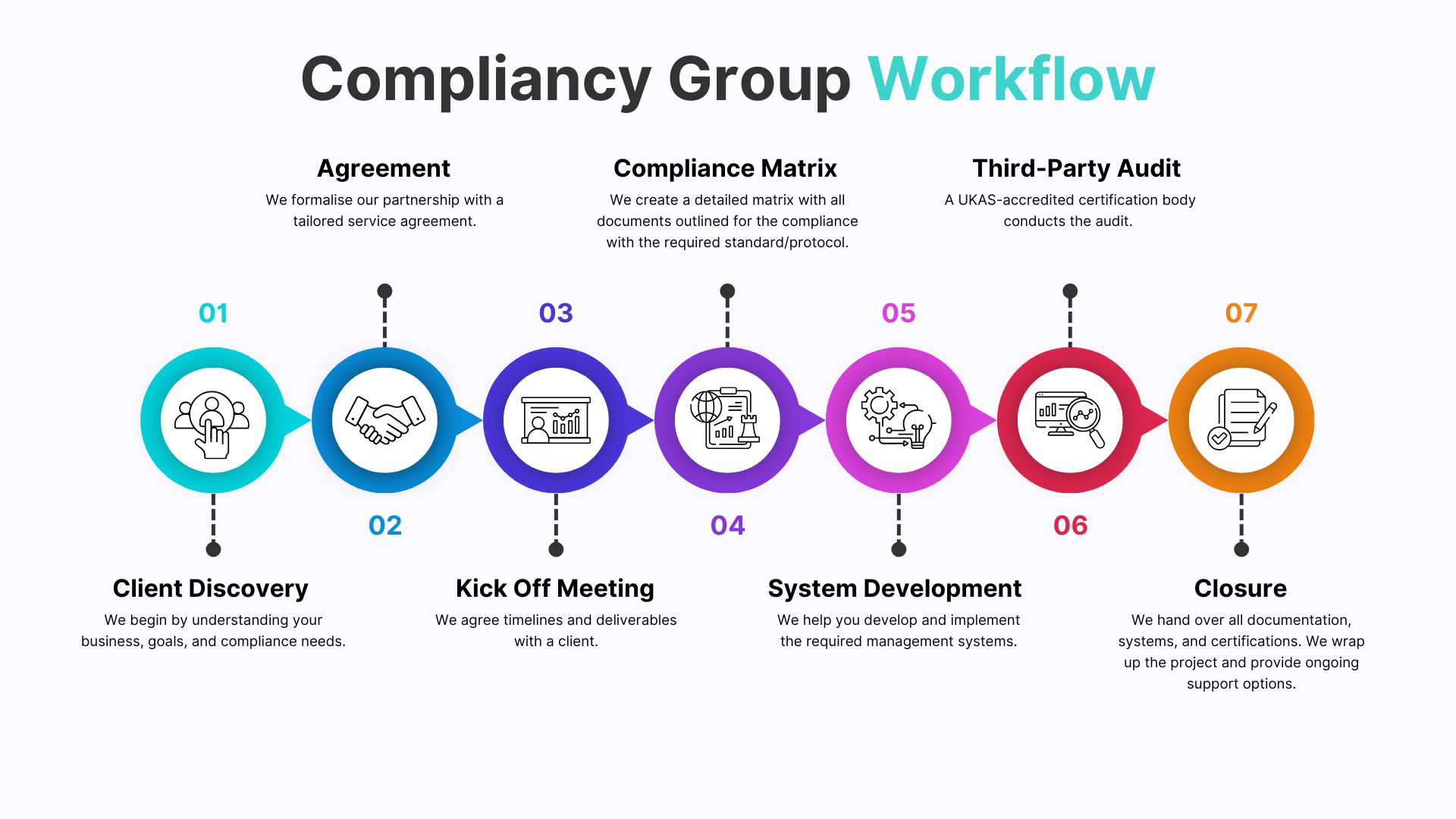We're Here To
Help

A Fire Risk Assessment is a comprehensive inspection designed to identify fire hazards, evaluate risks, and ensure your premises meet legal fire safety requirements. Completing a Fire Risk Assessment demonstrates your business’s commitment to protecting people and property, complying with regulations, and proactive risk management – trusted by clients, partners, and regulators across all sectors. With a robust fire risk assessment, you reduce the likelihood of fire incidents, avoid costly disruptions, and build a reputation for safety and responsibility. Compliancy Group guides you through every step – making fire safety compliance clear, practical, and a genuine business advantage.
We understand the complexities of fire safety regulations and risk management. Our team brings hands-on experience with fire risk assessments, prevention strategies, and industry best practices.
No one-size-fits-all here. Whether you need an initial assessment, action plan development, ongoing monitoring, or compliance advice, our services are fully customised to your operations. We offer flexible support packages—from essential guidance to comprehensive on-site consultancy.
We work exclusively with UKAS-accredited certification bodies and maintain a 100% pass rate for compliance assessments. Our clients trust us to deliver results that stand up to audit and regulatory scrutiny—helping you achieve, maintain, and leverage fire safety compliance for business growth.
Compliance shouldn’t slow you down. We help you build safer environments, reduce fire risk, and improve operational efficiency—so you can focus on your core business.
You’ll work directly with our expert team, including leadership involvement from our CEO. We pride ourselves on responsive communication, clear guidance, and ongoing support throughout your compliance journey.
Demonstrate compliance to secure contracts and reassure clients or insurers.
Show your commitment to fire safety and legal responsibilities.
Minimise the risk of fire outbreaks, property damage, and costly liabilities.
Enhance your standing as a responsible and trusted organisation.
Regular assessments and compliance checks foster a culture of ongoing safety and operational excellence.
Strengthen Reputation
From initial assessment to ongoing support, our team ensures you’re always prepared and confident.
We streamline compliance processes, freeing up your team to focus on core business activities.
Services are tailored to your specific business needs, not generic templates.
Ongoing support, training, and regulatory updates keep your business compliant long after inspection.
Our 100% compliance pass rate and exclusive partnerships with UKAS-accredited bodies mean you’re in safe hands.

Legal Requirement - Fire Risk Assessment Businesses employing five or more people must record the significant findings of the assessment. Each assessment needs to be reviewed regularly and when any significant changes to the building or work activity occur.
Guidance on fire safety in purpose-built blocks of flats recommends that for low-rise buildings of up to 3 storeys above ground, built in the last 20 years, FRAs should be: reviewed every 2 years. redone every 4 years.
Key steps 1.1: Fire hazards. A fire hazard is anything that can start a fire, such as ignition sources or combustible materials. ... 2.2: People at risk. How many people are in the premises? ... 3.3: Evaluate and act. How many floors and staircases are in the premises? ... 4.4: Record, plan and train. ... 5.5: Review.
A new British Standard, BS 9792:2025, has been released to provide guidance on fire risk assessments (FRAs) in housing premises. This standard, which supersedes PAS 79-2:2020, offers a framework and documentation examples for assessing fire risks in residential settings, including HMOs, blocks of flats, and specialized housing. It aims to ensure clarity, consistency, and competence in fire risk assessments, ultimately enhancing fire safety in residential buildings
A fire risk assessment can take anywhere from a few hours to several days, depending on the size and complexity of the building. For smaller properties, it might only take a couple of hours, while larger, more complex buildings could require several days or even weeks. The assessor's experience and the quality of existing documentation also play a role in the duration
Fire risk assessments do not have a specific validity period. However, the Local Government Authority does advise that low-rise buildings should have their fire risk assessments redone every 4 years. Older, or larger buildings may benefit from having an assessment done closer to annually.
The four types of fire risk assessments are Type 1 (Common Parts Only, Non-Destructive), Type 2 (Common Parts Only, Destructive), Type 3 (Common Parts and Flats, Non-Destructive), and Type 4 (Common Parts and Flats, Destructive). These assessments vary in scope and invasiveness, ranging from basic checks of common areas to detailed inspections of both shared spaces and individual dwellings, including destructive analysis in some cases
In the UK, while a specific "fire safety certificate" isn't universally required, businesses and building owners must comply with fire safety regulations, primarily through conducting regular fire risk assessments and implementing necessary safety measures. These assessments, not a certificate, are legally mandated, especially for non-domestic premises
The person responsible for carrying out the FRA is usually the owner (freeholder), managing agent, or management company of the building. It is good practice for them to give you a copy of the FRA if you ask for it. Some industry bodies, such as the Association of Retirement Housing Managers, also recommend it.